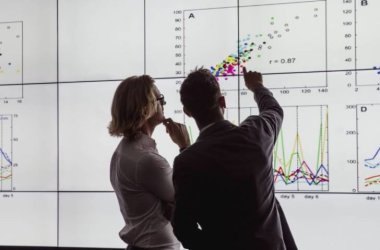*This article was originally published on SAS blog by Federica Citterio
Augusta Zhang and Jacek Dobrowolski also contributed to this article.
Automated computer vision technology is helping intelligence analysts stay one step ahead of gangs, terrorist groups, and other suspicious organizations.
Automation is at the heart of artificial intelligence. By helping humans automate repetitive tasks and make the most of their time, AI has resulted in remarkable successes that range from optimizing manufacturing supply chains to saving lives through improved cancer treatment strategies. Automation is embedded in many everyday processes to accelerate how we handle different tasks. A lot of research is conducted in the fields of AutoML (automated machine learning), AutoDL (automated deep learning), autoNLP (automated language processing), autoSpeech (automated speech classification), and autoCV (automated computer vision) to determine how machines can help us quickly solve challenges by interpreting our language, identifying images, and more.
At the core, these fields all share a similar process of learning from data. Machines can analyze data in depth thanks to hidden layers in neural networks, which find structures and regularities in the data and set weights so that an algorithm can acquire the skill to classify information or predict outcomes.
The challenge? Collecting high-quality data, and a lot of it.
Although AI is incredibly useful for extracting insights from our data, humans are still essential to set up the systems and providing the right foundation for machines to do the work. One of the biggest challenges is providing enough unbiased, correct, labeled data for analysis.
For example, in order to train an object detection model that uses computer vision to find objects in images, a user must first provide many sample images. Traditionally, a user manually labels hundreds or thousands of images and stores information such as the position, size and class of the objects of interest. This task requires lots of time and tedious effort, which is a huge investment before getting started. As data scientists, our question is, can we automate the image annotation process?
Well, in some cases, yes!
Jacek and I were recently approached to develop a solution to detect logos of interest in the area of security intelligence. Intelligence analysts piece together information from a variety of sources in order to assess threats and protect national security and economic wellbeing, including millions of images collected from social media. When a new, suspicious organization comes on their radar, it is important to keep track of the content they share, including images that may be identified thanks to the presence of a specific logo. This is a perfect use case for object detection, but it’s a huge effort to collect and label enough data to train a computer vision model to recognize a logo. Plus, the process must be repeated many times because new logos of interest can potentially come up every day. How can we develop models fast enough to stay ahead of these quickly evolving threats?





